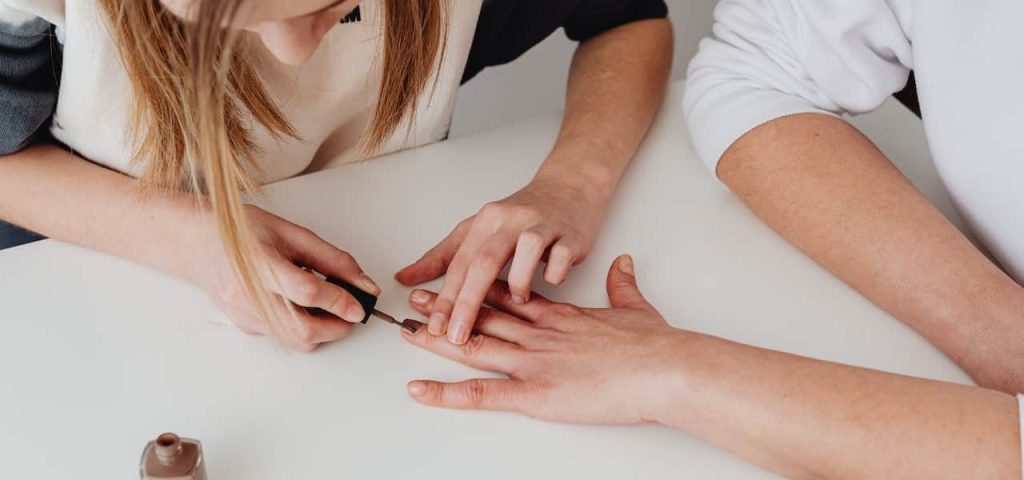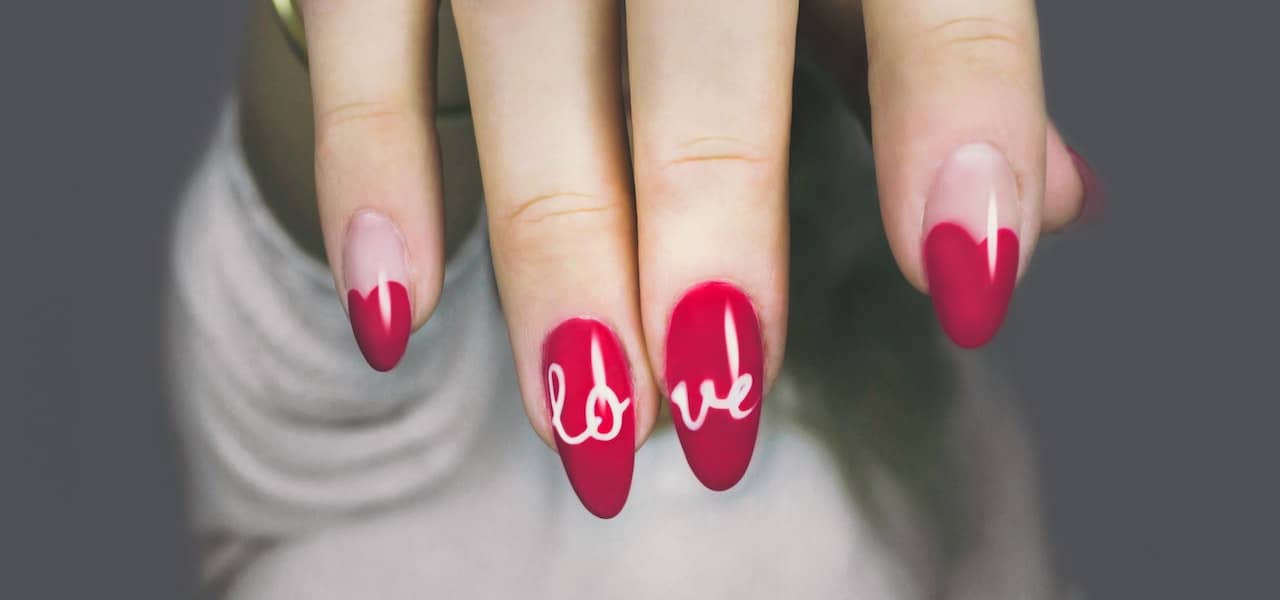Here is your complete guide to does acrylic nails hurt.
Introduction to Does Acrylic Nails Hurt
Nail care and maintenance have become an essential part of many people’s beauty routines. Among the various nail enhancement options available, acrylic nails have gained popularity for their durability and versatility. However, a common concern among those considering acrylic nails is whether they hurt or cause discomfort during the application process or while wearing them. In this article, we will delve into the world of acrylic nails, debunk common myths, and provide tips for a pain-free experience. So, if you’re curious about whether acrylic nails are painful, keep reading to learn the truth! Here is your complete guide to does acrylic nails hurt. So let’s start by explaining “does acrylic nails hurt“.
Understanding Acrylic Nails
Acrylic nails are artificial nails that are created by combining a liquid monomer with a powdered polymer. The mixture forms a soft dough-like consistency that can be shaped into the desired nail shape and length before hardening when exposed to air. Acrylic nails are applied by a qualified nail technician who uses a brush to apply the mixture onto the natural nails or nail tips, creating a strong and durable extension. The nails are then filed, shaped, and polished to achieve the desired look.
Acrylic nails offer several benefits, which contribute to their popularity. They are known for their durability and resistance to chipping, making them a long-lasting option for those seeking to maintain flawless nails. They are also versatile, allowing for various shapes, lengths, and designs, and can be customized to suit individual preferences. Acrylic nails are commonly used for nail extensions, overlays, and even nail art, providing endless possibilities for creative expression.
Debunking Myths About Acrylic Nails
Despite their popularity, acrylic nails have been associated with some myths that may deter people from trying them. Let’s explore and debunk these common myths:
Myth: Acrylic nails are painful to apply
One of the most prevalent myths about acrylic nails is that the application process is painful. However, the truth is that the application of acrylic nails should not be painful if done correctly by a qualified nail technician. The process usually involves cleaning the natural nails, applying a primer to improve adhesion, and then carefully applying the acrylic mixture onto the nails or nail tips. While some individuals may experience slight discomfort from the strong odor of the products used or the sensation of the wet mixture on their nails, it should not be painful.
It’s essential to choose a reputable nail salon and a qualified nail technician who is trained and experienced in acrylic nail application. A skilled technician will take proper care in applying the acrylic mixture, ensuring that it does not come into contact with the cuticles or skin, which can cause discomfort or pain. Additionally, communicating any preferences or concerns with the nail technician beforehand can help them tailor the application process to your comfort level.
Myth: Acrylic nails cause discomfort and pain
Another myth about acrylic nails is that they can cause discomfort and pain after the application process. While it’s true that some individuals may experience discomfort or pain while wearing acrylic nails, it is often due to improper maintenance, hygiene, or other avoidable factors. When acrylic nails are applied and maintained correctly, they should not cause discomfort or pain.
One common reason for discomfort is when the nails are too long or too thick, putting excessive pressure on the natural nails and causing discomfort or pain. It’s important to communicate your preferences and concerns with the nail technician during the application process to ensure that the length and thickness of the nails are comfortable for you. Regularly filing and shaping the nails as they grow can also help prevent discomfort.
Improper filling or maintenance of acrylic nails can also cause discomfort or pain. If the nails are not filled or maintained properly, the acrylic may lift or separate from the natural nails, causing discomfort or even pain. It’s essential to follow proper maintenance routines, such as keeping the nails clean and dry, avoiding excessive exposure to water, and avoiding using the nails to open objects or perform other strenuous activities that can cause stress on the nails.
Additionally, some individuals may experience sensitivity or allergic reactions to the products used in acrylic nails, such as the liquid monomer or the acrylic powder. If you notice any signs of irritation, redness, or discomfort, it’s important to seek professional advice and have the nails removed to prevent further discomfort or potential complications.
Myth: Acrylic nails damage natural nails
There is a common misconception that acrylic nails damage natural nails. However, when applied and maintained correctly, acrylic nails should not cause any harm to the natural nails. In fact, acrylic nails can actually protect the natural nails from external elements and prevent them from breaking or splitting.
It’s important to choose a qualified nail technician who follows proper application and removal techniques to minimize the risk of damage to the natural nails. Proper removal is crucial, as forcefully peeling or ripping off acrylic nails can cause significant damage to the natural nails, leading to pain, discomfort, and even infection.

What Causes Nails to Feel Sore After Getting Acrylics?
There are several reasons why nails may feel sore after getting acrylics:
Improper Application
If the acrylic nails are applied too thick or too long, it can put pressure on the nail bed, causing soreness or discomfort.
Nail Bed Trauma
During the nail preparation process, which involves filing and buffing of the natural nails, there may be some trauma to the nail bed, leading to soreness.
Allergic Reaction
Some individuals may develop an allergic reaction to the chemicals used in acrylic nails, such as the liquid monomer or powder polymer, which can cause soreness or discomfort.
Inflammation
The application of acrylic nails can sometimes cause inflammation and irritation of the nail bed, resulting in soreness.
How to Prevent Nail Soreness
To prevent nail soreness after getting acrylics, consider the following tips:
Choose a Qualified Nail Technician
Make sure to choose a qualified and experienced nail technician who follows proper application techniques to avoid excessive thickness or length, which can cause pressure on the nail bed.
Communicate Any Discomfort
During the application process, if you experience any discomfort or soreness, communicate with your nail technician immediately to address the issue.
Proper Nail Bed Preparation
Ensure that the natural nails are properly filed and buffed during the preparation process to minimize trauma to the nail bed.
Quality Products
Use high-quality acrylic products that are safe and hypoallergenic to minimize the risk of allergic reactions.
Follow Proper Maintenance
Follow a proper maintenance routine, including regular fills and avoiding harsh chemicals or excessive use of nails, to prevent any damage or soreness.
Is There a Similar, Yet Less Painful Alternative to Acrylics?
Yes, there are alternative options to acrylic nails that may be less painful for some individuals:
- Soft Gel Nails: Soft gel nails are made from a flexible gel that is cured under UV or LED light. They tend to be more flexible and natural-looking compared to acrylic nails and may cause less discomfort or soreness.
- Dip Powder Nails: Dip powder nails involve applying a base coat, dipping the nails in colored powder, and then sealing with a top coat. This process avoids the use of liquid monomer and may be less irritating for some individuals.
- Press-On Nails: Press-on nails are pre-made artificial nails that can be applied and removed at home. They do not require any liquid monomer or UV/LED curing and may be a less painful alternative for those who are sensitive to chemicals or have a low pain tolerance.
Tips for a Pain-Free Acrylic Nail Experience
To ensure a pain-free experience with acrylic nails, here are some helpful tips:
- Choose a reputable nail salon and a qualified nail technician who is experienced in acrylic nail application.
- Communicate your preferences, concerns, and comfort level with the nail technician during the application process, including the length and thickness of the nails.
- Follow proper maintenance routines, such as keeping the nails clean and dry, avoiding excessive exposure to water, and avoiding using the nails to perform strenuous activities.
- Regularly file and shape the nails as they grow to prevent discomfort from overly long or thick nails.
- Avoid forcefully peeling or ripping off acrylic nails, and always follow proper removal techniques by a qualified nail technician.
- If you notice any signs of irritation, redness, or discomfort, seek professional advice promptly to prevent further discomfort or potential complications.
Here’s a table outlining the top ten reasons why you may experience pain on the first day after getting acrylic nails
| Rank | Reasons for Pain | Description |
|---|---|---|
| 1 | Improper Nail Bed Preparation | Rough or improper filing and buffing of the natural nails during the preparation process can cause soreness or discomfort. |
| 2 | Excessive Nail Length | Acrylic nails that are too long can put pressure on the nail bed, leading to pain or soreness. |
| 3 | Thick Acrylic Application | Acrylic nails that are applied too thick can cause discomfort or pain due to the added pressure on the nails. |
| 4 | Allergic Reaction | Some individuals may develop an allergic reaction to the chemicals used in acrylic nails, such as the liquid monomer or powder polymer, leading to pain or discomfort. |
| 5 | Nail Bed Trauma | Rough handling or excessive force during the acrylic nail application process can cause trauma to the nail bed, resulting in soreness or pain. |
| 6 | Inflammation | The application of acrylic nails can sometimes cause inflammation and irritation of the nail bed, leading to pain or discomfort. |
| 7 | Sensitivity to Chemicals | Some people may have a higher sensitivity to the chemicals used in acrylic nails, leading to pain or discomfort upon application. |
| 8 | Pressure from Tight Nail Tips | If the nail tips used for acrylic nails are too tight, it can cause discomfort or pain on the first day after application. |
| 9 | Improper Curing | If the acrylic nails are not cured properly under the UV or LED lamp, it can result in incomplete curing and potential pain or discomfort. |
| 10 | Incorrect Nail Shape | Nails that are shaped too aggressively or incorrectly during the acrylic nail application process can cause pain or discomfort on the first day. |
FAQs about Does Acrylic Nails Hurt
Is it Normal for Acrylic Nails to Hurt?
No, it is not normal for acrylic nails to cause pain when properly applied and maintained. Acrylic nails should feel comfortable and not cause any discomfort during or after the application process. If you experience pain or discomfort during the application of acrylic nails, it could be due to improper application techniques, such as using excessive pressure or improper nail preparation. In such cases, it’s important to communicate with your nail technician and address any discomfort immediately to ensure a proper and pain-free experience.
Read More About Should You Wear a Bra to Sleep?
Why Do My Nails Hurt After Acrylic?
If you experience discomfort or pain after getting acrylic nails, it could be due to several reasons. One common reason is that the nails were applied too thick or too long, causing pressure on the nail bed, which can result in pain or discomfort. Another reason could be that the nails were not properly filed and shaped, leading to sharp edges or uneven surfaces that can cause irritation or pain. Additionally, if the nails were applied using improper techniques or low-quality products, it can result in discomfort or pain. In such cases, it’s essential to address the issue with your nail technician and seek appropriate solutions to alleviate the discomfort.
Read More About How Long Do Acrylic Nails Last?
Do Acrylic Nails Hurt to Take Off?
The process of removing acrylic nails should not be painful when done correctly by a qualified nail technician. However, if acrylic nails are forcefully peeled or ripped off, it can cause pain and damage to the natural nails. Proper removal of acrylic nails involves soaking them in acetone or using other professional-grade products to dissolve the acrylic, followed by gentle filing or lifting of the nails. If you experience pain or discomfort during the removal process, it may be a sign that the nails are not being removed properly, and it’s important to seek professional assistance to avoid any potential damage to the natural nails.
Read More About Makeup in the 70s.
Are Acrylics Worse for Your Nails Than Gel?
Both acrylic and gel nails have their pros and cons, and it’s subjective to determine which one is “worse” for your nails as it depends on various factors, including the application and maintenance techniques. However, there are some differences between the two.
Acrylic nails are made by combining a liquid monomer and a powder polymer, which creates a hard and durable layer on the nails when applied and cured. On the other hand, gel nails are created by applying a gel polish that is then cured under a UV or LED light to harden.
Read More About Hair and Makeup Trailers.
Conclusion
In conclusion, acrylic nails, when applied and maintained correctly, should not cause any pain or discomfort. The myths surrounding the pain associated with acrylic nails are often due to improper application, maintenance, or other avoidable factors. By choosing a reputable nail salon, communicating with the nail technician, and following proper maintenance routines, you can have a pain-free experience with acrylic nails.
Read More About Isolating Lashes.
Remember to prioritize the health and comfort of your natural nails by choosing a qualified nail technician, following proper maintenance routines, and seeking professional advice if you notice any signs of discomfort or irritation. With proper care and maintenance, you can enjoy the beauty and durability of acrylic nails without any pain or discomfort. So, go ahead and rock those stunning acrylic nails with confidence!
Read More About Volume Lash vs. Classic Lash.
Read More About Powerlifting Weight Classes for Women: Everything You Need to Know.

